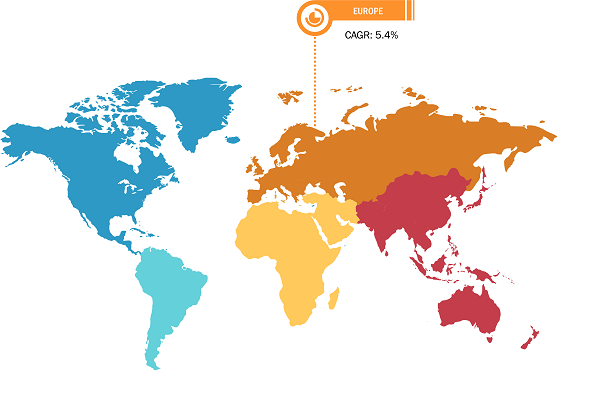Supportive Policy Frameworks to Fuel Europe Biostimulants Market Growth
According to the latest market study on “Europe Biostimulants Market Forecast to 2031 – Regional Share, Trend, and Growth Opportunity Analysis – by Product Type, Mode of Application, and Crop Type,” the market size is projected to reach US$ 2.60 billion by 2031 from US$ 1.83 billion in 2024. The market is expected to register a CAGR of 5.4% from 2025 to 2031. The report highlights key factors contributing to the Europe biostimulants market size and prominent players, along with their developments in the market.
In Europe, the commitment to achieving net-zero emissions by 2050 has spurred investments in biostimulant production facilities and research into innovative biostimulant applications. Collaborations between academia, industry, and government agencies also foster innovation and knowledge exchange, positioning the region as a hub for biostimulants research and development. Further, biostimulants help maintain the soil's pH and acidity levels. European Union also encourages the application of biostimulants by spreading awareness and benefits among consumers. All these factors are likely to support the biostimulants market growth in the region. Further, the biostimulants market trends include the technological advancements in biostimulant development.
Europe Biostimulants Market Analysis
Europe Biostimulants Market Size and Forecast (2021 - 2031), Regional Share, Trend, and Growth Opportunity Analysis Report Coverage: By Product Type (Humic Substances, Amino Acids, Microbial Stimulants, Seaweed Extracts, and Others), Mode of Application (Foliar Spray, Seed Treatment, and Soil Application), and Crop Type (Cereals and Grains, Oilseeds and Pulses, Fruits and Vegetables, Turf and Landscapes, and Others)
Europe Biostimulants Market Overview and Forecast by 2031
Download Free Sample
Nichino Europe Co Ltd, Syngenta AG, BASF SE, UPL Ltd, FMC Corp, Russell IPM Ltd, Sipcam UK Ltd, IntraCrop Ltd, Bionema Ltd, and Central Pharma Contract Packing Ltd are among the prominent players profiled in the Europe biostimulants market report.
Europe Biostimulants Market Report Segmentation:
Based on product type, the market is segmented into humic substances, amino acids, microbial stimulants, seaweed extracts, and others. The seaweed extracts segment held the largest Europe biostimulants market share in 2024. Seaweed extract improves plant growth at all stages, such as germination, harvesting, and post-harvest. It is a blend of organic components, e.g., fatty acids, vitamins, low levels of plant nutrients, and plant growth regulators, such as cytokinins, gibberellins, and auxins, which are primarily used in agricultural activities as an additive for fertilizers and biostimulants.
Based on the mode of application, the market is segmented into foliar spray, seed treatment, and soil application. The foliar spray segment held the largest Europe biostimulants market share in 2024. Foliar sprays are used to spray liquid fertilizers on the plants. Foliar spray is the most efficient technique for applying fertilizers, such as biostimulants, to plants. The unique benefits of foliar sprays, such as the uniform distribution of nutrients, easy application, and increased agricultural output, have led to the increasing demand for foliar sprays in lawns and gardens, thereby contributing to the growth of the foliar spray segment.
Based on crop type, the market is segmented into cereals and grains, oilseeds and pulses, fruits and vegetables, turf and landscapes, and others. The cereals and grains segment held the largest share of the Europe biostimulants market in 2024. Biostimulants are highly consumed for cereal and grain crops such as wheat, maize, sorghum, barley, finger millet, and soybean. The role of biostimulants is to control and accelerate the life processes of these plants, stimulate their development, and increase their resistance to stress. The use of biostimulants contributed to the increase of nutrients in cereals and grains, particularly macronutrients such as sodium and calcium and micronutrients such as copper and molybdenum.
Contact Us
Phone: +1-646-491-9876
Email Id: sales@theinsightpartners.com